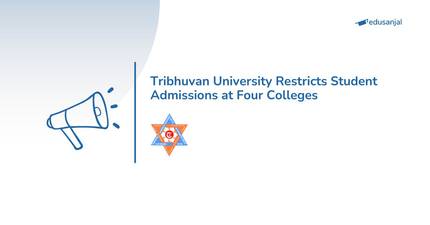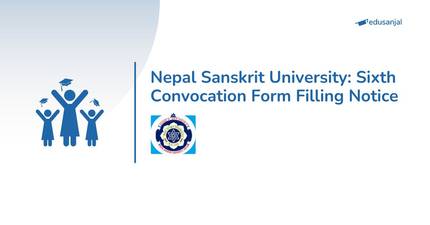Tribhuvan University (TU) is the oldest and largest university in Nepal. It was founded under the TU Act in 1959 A.D. It was named after the late King Tribhuvan and during its early years. The university was relocated to its main campus in Kirtipur in 1967 A.D.
In 2019, it has 60 constituent campuses and thousands of affiliated colleges all over the country. There are 39 central departments and 4 research centers in TU. The university offers 2,079 undergraduate and 2,000 postgraduate programs across a wide range of disciplines.
Tribhuvan University is government funded and more affordable than the country’s private universities. There are five technical institutes and four general faculties. The university offers 115 courses for the technical proficiency certificate level. It offers 1079 courses at Bachelor's level and 1000 courses at Master's level. It offers Ph.D. degrees in the technical institutes and faculties.
Comparison of Tribhuvan University and the world's top ranked university:
The Times Higher Education World University Rankings, founded in 2004, provide the definitive list of the world’s best universities. According to Times Higher Education World University Rankings, Tribhuvan University is in the rank 801-1000. It has been able to maintain its position for the last two consecutive years.
The top five universities in the world, in terms of excellence and impact are:
- University of Oxford
- University of Cambridge
- Stanford University
- Massachusetts Institute of Technology
- California Institute of Technology
|
World Rank |
Name |
No. of FTE Students |
No. of students per staff |
International Students |
Female: Male Ratio |
|
1 |
University of Oxford (United Kingdom) |
20,298 |
11.0 |
40% |
46:54 |
|
801-1000 |
Tribhuvan University (Nepal) |
359,377 |
44.6 |
n/a |
44:56 |
In comparison with the world's rank one university, Tribhuvan University lands on the rank of 801-1000. It has higher number of FTE Students. Full-time Equivalent Enrollment (FTE) used by universities and other educational institutions in a similar fashion to track enrollment of full and part-time students. The full time students have a full credit load which is often 12 hours per week. According to the data, TU has altogether 359,377 students among which 44% are female and 56% are male. Even with decline on student enrollment in the last few years, the university still attracts thousands of students who seek for higher studies.
|
World Rank |
Name |
Overall |
Teaching |
Research |
Citations |
Industry Income |
International Outlook |
|
1 |
University of Oxford (United Kingdom) |
96.0 |
91.8 |
99.5 |
99.1 |
67.0 |
96.3 |
|
801-1000 |
Tribhuvan University (Nepal) |
19.0-25.9 |
9.2 |
6.6 |
35.7 |
34.0 |
45.2 |
In further divided criteria, there is a large gap between the overall performance of Tribhuvan University in comparison to University of Oxford. The data is available based on five criteria, which include teaching, research, citation influence, international outlook and industrial income. Research seems to be a crucial aspect which has to be much focused in Tribhuvan University.
Comparison of Tribhuvan University and the top universities of South East Asia out of the top 1000:
Times Higher Education World University Rankings places Tribhuvan University is in the rank 251-300 in the sub-division of Asian Universities. The South East Asian Universities such as Indian Institute of Science (India), COMSATS University Islamabad (Pakistan), and University of Colombo (Sri-Lanka) are featured below in a comparative manner.
|
Asia Rank |
Name |
No. of FTE Students |
No. of students per staff |
International Students |
Female: Male Ratio |
|
29 |
Indian Institute of Science (India) |
4,071 |
9.4 |
1% |
21:79 |
|
131 |
COMSATS University Islamabad (Pakistan) |
31,413 |
10.9 |
1% |
25:75 |
|
251-300 |
Tribhuvan University (Nepal) |
359,377 |
44.6 |
n/a |
44:56 |
|
301-350 |
University of Colombo (Sri Lanka) |
29,464 |
29.5 |
n/a |
56:44 |
Tribhuvan University competes well among its South East Asian competitors as it demonstrates student popularity and also the effective performance. The adjacently ranked institutions also seem to be struggling in the field of research.
|
Asia Rank |
Name |
Overall |
Teaching |
Research |
Citations |
Industry Income |
International Outlook |
|
29 |
Indian Institute of Science (India) |
46.4–49.4 |
56.7 |
51.4 |
41.7 |
50.7 |
20.2 |
|
131 |
COMSATS University Islamabad (Pakistan) |
26.0–33.4 |
15.6 |
9.0 |
63.2 |
34.1 |
45.5 |
|
251-300 |
Tribhuvan University (Nepal) |
19.0-25.9 |
9.2 |
6.6 |
35.7 |
34.0 |
45.2 |
|
301-350 |
University of Colombo (Sri Lanka) |
9.8–18.9 |
24.8 |
7.8 |
10.7 |
34.0 |
39.8 |
Tribhuvan University has been able to climb the ladder of the different academic criteria. To perform better and rank higher, it needs to remodel, update and revisit the different courses and academic services provided by it.
The analysis of data provides sufficient reasons that Tribhuvan University is doing well like its South East Asian counterparts. However, there is much needed for improvement. It has an immense potential for growth and higher ranking in the future. The priority must shift towards international collaboration and improve its ranking in the world chart.












